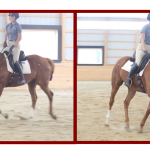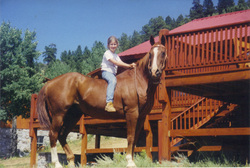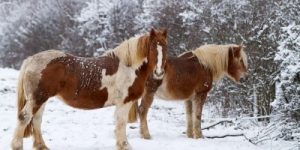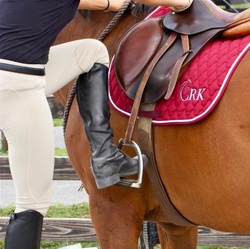The connection between brain and body is an interesting one. Changes in our brain – thoughts, feelings, emotions, will change our body. We look different and move differently when feeling sad, discouraged, or frustrated as opposed to happy, hopeful, or content.
However, changes in our body also affect how we feel. If you’re feeling depressed, you will probably be slumped over with shoulders curved forward and head looking down.
“While it’s true that you’re sitting this way because you’re sad, it’s also true that you’re sad because you’re sitting this way.” This is the philosophy of embodied cognition, the idea that the relationship between brain and body goes both ways, meaning our thoughts and emotions influence our posture and movement, but also our posture and movement are influencing our thoughts and emotions. (Vivian Giang, in an article on Embodied Cognition)
This connection between brain and body also involves balance, stability, degree of tension, and of course – discomfort or pain.
How we feel physically will obviously affect us as riders, but for this article, I’m not focusing on our human experience of this brain, body connection, instead I’d like you to consider how this affects your horse.
Effects on the Horse
As humans, our brains may be larger and more developed for abstract thought, but we do share basic anatomy with our equine friends.
This is why riding a horse is so unique – they aren’t a machine with automatic responses to cues of legs squeezing or reins pulling back. Horses learn how to respond and what to respond to through training.
But there’s more than training that influences how our horses behave. Emotions such as anxiety play a big role, and can be triggered by external stimulus – clippers, the horse trailer, a companion horse leaving, but also by physical sensations – how balanced and comfortable the horse feels.
The brain, body connection can go both ways in our horses too. Hearing running clippers may make a horse tense, causing him to lift his head and stiffen his back and body. Likewise, a horse with a sore back may also lift his head and stiffen his back to avoid the discomfort. Holding this position can also begin to trigger anxiety in the horse.
Here’s an example:
We’re out on a trail ride on a Sunday afternoon. The horses are walking along calm and relaxed, heads down, bobbing along with the even rhythm of their steps. Then three deer jump out of the woods and bound across the trail and into the field ahead. Instantly our horses become alert, their heads pop up, ears strain forward towards the running deer, and their steps become short and quick. We can feel the tension spread through their body as this automatic response prepares them to run away from whatever danger may be present.
But as quickly as the deer jumped out, they disappear and within a few minutes our horses are walking calmly again.
In this example, an outside situation triggered our horse’s alertness, and their body responded.
The next day, we go out trail riding again, but on different horses. This time, my saddle doesn’t fit too well, so my horse is keeping his head high, and dropping his back down, trying to minimize the discomfort from the saddle. Your horse had an old injury and he is stiff and perhaps still sore on his left side, he always carries his head a bit crooked and gets quick and defensive if any rein pressure is used on that side. Since neither of our horses are comfortable they both walk with tense, short steps.
Right from the start of our ride, both seem more reactive, starting or spooking every time the wind picks up and blows the leaves around.
The same deer jump out in the trail in front of us and this time our horses blow up, spooking and spinning. We get them facing forward again and the deer have disappeared, but they keep prancing and jigging along for ten minutes before finally settling back into a walk.
What made the difference between these two rides and our two sets of horses? While there are always many factors that affect behavior, mood, and emotion, when a horse is physically uncomfortable or out of balance, it changes how they stand and how they move, which can then change their emotion, making them more anxious, fearful, even aggressive, and cause them to spook, buck, run, or just appear unresponsive.
A misbehaving or unresponsive horse isn’t always choosing to ignore us, sometimes all their attention is simply on other priorities.
Priorities of the Brain
It’s frustrating when our horse ignores us and doesn’t seem to learning or responding.
To understand why this happens, we need to understand the priorities of the brain. The first job of a brain is to keep the individual it belongs to alive.
This involves protecting the head and the brain from concussion or torque. Staying balanced and remaining upright is part of this. If a horse feels as though he is at risk of falling, he may stand or move in a way that is uncomfortable, temporarily ignoring pain, or even other threats, until a moment of balance returns.
Next, he will process and respond to information coming in from his environment. The brain makes almost instant decisions about what is safe, and what could be a threat, then reacts. Part of this process is instinctual and part is dependent on prior learning and conditioning for what is threatening and what is safe.
Only when the horse has a sense of balance and safety from external threats will their brain register and react to pain. This is why a horse in pain can be overlooked. They aren’t consciously hiding the pain, it is not registering for them because their brain is responding to instability or external threats.
After the first three priorities are accounted for, and the horse is in balance, safe, and comfortable, can we expect them to be light and responsive to subtle cues.
If the prior priorities are not met, we will be forced to use much higher levels of pressure or pain to get a response.
So how can we help our horses be more balanced and comfortable?
Remember the simple concept we discussed earlier regarding posture, movement, and emotion. Since how the horse feels and carries himself physically affects how he feels and behaves, when we help the horse feel better physically it can help him emotionally, so he will be less reactive, and be able to learn better.
For example, an uncomfortable horse may hold a tense posture and become more anxious, but if we can help that horse get comfortable and coax him into relaxed posture and movement, he can become calmer.

Identifying the Problem
The first step is to look for potential causes of pain and discomfort for the horse. We can start with the most obvious first, the fit of the equipment we are using. The saddle must distribute weight evenly without creating pressure points, or putting weight where it does not belong such as on the spine or behind the last rib. The bit and bridle must fit without pinching or rubbing.
Next, we may look at the horse’s teeth, as the horse’s dentition is very important to their comfort and sense of balance due to the TMJ joint, connecting the upper and lower jaw.
Also, the health and trimmed angles of the horse’s hooves will greatly affect their balance as well as their stance and movement.
We should also consider the possibility of injury or pain in other areas, such as overstrained muscles, painful joints, or internal issues such as ulcers.
Even if a horse does not have an acute injury or is not in pain, old injuries or activities may have created a habitual stance or pattern of movement that creates more tension. For example, keeping a hollow back, leaning to one side, or pushing harder with one hind leg.
Every horse also has some degree of normal asymmetry, similar to our human trait of being right or left handed, and will often show more difficulty bending or turning one direction.
For ridden horses, we need to remember that riding is not a natural situation for our horses, and they need to learn to properly carry our weight, and be fit enough for what we are asking them to do. Again, just as a human weightlifter will start to lose good form if they lift too heavy too soon, our horses need the appropriate strength and fitness to accomplish that higher degree of collection or bigger course of jumps.
Also, as riders, we can easily put the horse in poor posture by riding in a way that restricts their movement, for example with heels jammed down and tight gripping legs or restrictive hands.

Correcting the Problem
Improving posture and movement is often a three-step process.
As we discussed in the last section, the first step is identifying any pain, discomfort, or restrictions affecting the horse and eliminating those restrictions or discomfort. Examples could be having a dentistry performed, trimming the horse’s feet, treating an injury, or getting a better fitting saddle.
The next step is to help the horse realize the discomfort is no longer there, find a different balance, or change an old pattern. Various methods of body work can help with this, as can ideas such as Wendy Murdoch’s Sure Foot pads or Linda Tellington Jones’ Equine Awareness method. Experienced riders can often achieve this with slow work under saddle or in hand as well.
Finally, we may need to strengthen the horse to carry himself in this different movement or posture. Think of a person who works long hours at a desk and has developed a slumped posture – sitting straighter with chest expanded and shoulders back will take conscious effort until that person develops the habit as well as the different organization of muscles and other structures to maintain the position.
***
How our horse stands and moves matters. It makes no difference whether he is a weekend trail horse or a high-performance competitor, his emotions, and therefore his behavior and responses to our requests and cues will be affected by his physicality.
When we can identify what is causing the poor posture or movement, whether it’s discomfort, old habits, lack of training, or even our own imbalance as a rider, we can work to improve the problem, creating not just a healthier, but also a happier riding partner.














19 Responses
Terrific advice, thank you!
Love your articles and videos!
Your articles are so timely to where I am at with training my horse. I am fortunate that I have trainer who believes horse and rider must be in sync to facilitate learning. I learn something new about my mare and myself with each interaction.
Hi Callie,
Very well written article and I sure can relate to this lately. I’ve recently strained my right knee and the pain has now travelled to my hip. My doc assured me that I’m still ok to ride my horse but have to put tennis and running on hold. My horse has been having difficulties rounding his body to the right and tends to fall in and bend his head. I’m suspecting he’s also in pain. Although he only does that while I’m riding him and not during groundwork. How can I verify if he is also experiencing joint and muscle pain? And if yes what can I do to help him recover?
Hi Viviane, physical issues can be very individual, so I would contact your veterinarian for help with both diagnosing and treating any problems.
Dear Callie,
Thank you so much for this timely article. Lately my pony has developed some bad habits just seemingly out of the blue, and this has alerted me to look for outside factors.
Thank you for another excellent article!
Excellent article! I do have a question though. We bought our first very own horses a year ago. How do you determine how to order the best fitting saddle and bridle/bit? It seems nowadays that tack shops are far away or people order online. Thanks for any suggestions! I love your articles and videos!
Hi Pam – best option is to look for a professional saddle fitter in your area. Ask for recommendations and try to find one that is independent of a saddle company if possible. Next best option, listen to this interview and get her book https://crktrainingblog.com/expert-interviews/is-your-horse-pain-free-saddle-fitting-with-dr-joyce-harman/
https://crktrainingblog.com/expert-interviews/is-your-horse-pain-free-saddle-fitting-with-dr-joyce-harman/
Thanks, Callie. The barn and riding are a refuge from the work day for me. I try not to bring the everyday problems with me. This article reinforces the need to leave those troubles behind and enjoy the ride.
Fantastic article, Callie! It is so important to hear these concepts over and over so that we can better recognize them in the varied situations we find ourselves in with our horses – those “aha” moments that can prevent so much misunderstanding. Thank you so much!
Hi Callie,
I live in Australia in Queensland and work in the city, so my horse lives a 6 hour drive away and lives on a farm with my best friend and her horse. I only get to ride my horse once or twice a month at the moment but will be moving in the very near future. I love my horse and i know he loves me when he sees me drive up the road to the farm house he canters on up with a whine and enjoys a scratch when i get to him. He is a pleasure to ride but has a very stubborn side to him. We will be riding along nicely and comfortably for about an hour until he sees that gate that leads off to that trail! I have tried numerous different ways to get him to go through but he will not budge. Ive dismounted and tried walking him through, ive used treats, I’ve tried a different entry point and we’ve used my friends horse cause they are best buddies to try and get him through the gate, but no success. The paddock is an open paddock with a little bit of scrub like what his yard is like so I dont undestand why or what it is. Ive checked his surroundings for anything unusual or spooky. Im all for any ideas or tips. I love watching your videos and love the information you give as alot has helped in how I ride my fury friend. He is a very placid friendly horse and he loves being riden but its just this one issue. Please help.
Hi Lisa – I would take a whip (easier than holding steady leg pressure for a long time), and tap, tap, tap, to ask for forward through this gate. When you get forward stop. If you get sideways, backwards, etc, keep tapping. Any forward movement stop. If you do this from the ground, you can also reward for the forward step with a treat.
I love the consice explanation of the main points. Is there a share link to this article I’m missing?
Hi Ro! There should be a link for social media sharing on the side, but here is the direct link to this article: https://crktrainingblog.com/better-riding/how-your-horses-movement-affects-his-behavior/
Thanks!
Hi Callie, thankyou so much for responding, I am going to see my horse in a couple of days and will be at the farm for a week, and i sure will try using the whip with the tap tap tap motions. I will let you know how we go.
Lisa
From Australia.
Hello Callie, this post was a very interesting and a educational read. You bring out many good points and recommendations that could correct these problems. As always, I really enjoy reading your post and learning from them that helps me to have better understand of my horse behavior and helps me become a better rider. A win – win for both the horse and the rider.
Thanks very much for sharing these post with us.
Hi Callie, this is one of the most informative articles I have ever read, and the part about balance and physical sensation affecting the horse’s behavior was new to me. After reading and listening to your teaching on a variety of subjects for a few years now, I think I have developed a pretty good understanding of what my two horses would need to become balanced, comfortable and happy to carry a rider. I have learned so much from you and am very grateful to you for what you do. The problem is that the issues are so complex and I would need the help of a local trainer and consistent work to change things for the better. My instructor moved to another state and only comes back to WA once a year to teach. Do you know of anyone here in WA that you could recommend to help me with my very unbalanced, tight-muscled mustang, and my rescue gelding who has a weak and narrow-based hind end and bucks people off? Or any resources you could give me to help me do the training myself? I have physical problems and muscle issues myself and riding is hit-and-miss here in WA as my horses are at home with me and I don’t have the time and set-up, like covered arena, to be able to ride consistently, nor an experienced person to come and help me. This has been going on for several years and I’m at a point I am so discouraged with all the challenges far outweighing the small successes that I am considering finding someone else for my horses who can train them consistently and the right way. I would appreciate any help and suggestions from you and anyone else who reads this. Thank you so much.
Katrin, I’d love to be able to recommend some resources to you to help you find some good help! Unfortunately, I’m not familiar with anyone in Washington that I can recommend for a trainer, I know you are in the Effortless Rider Course – are you apart of our CRK Training Course Members Facebook group? That would be a great place to ask for trainer recommendations. Another resource that I’d like to recommend to you is our Training Journals program, with hundreds of videos of real life training sessions with horses that have a wide variety of behavioral or riding issues. You can click here to learn more about Training Journals. What problems specifically are you experiencing with your horses?
-Julia Burdy, CRK Training Community Manager
This information is so very helpful and just makes sense. It gives me hope for my horses and myself. I am hoping that we won’t lose what we have gained, this winter, but dreading the cold, and fall has started out mighty cold. Brrr.